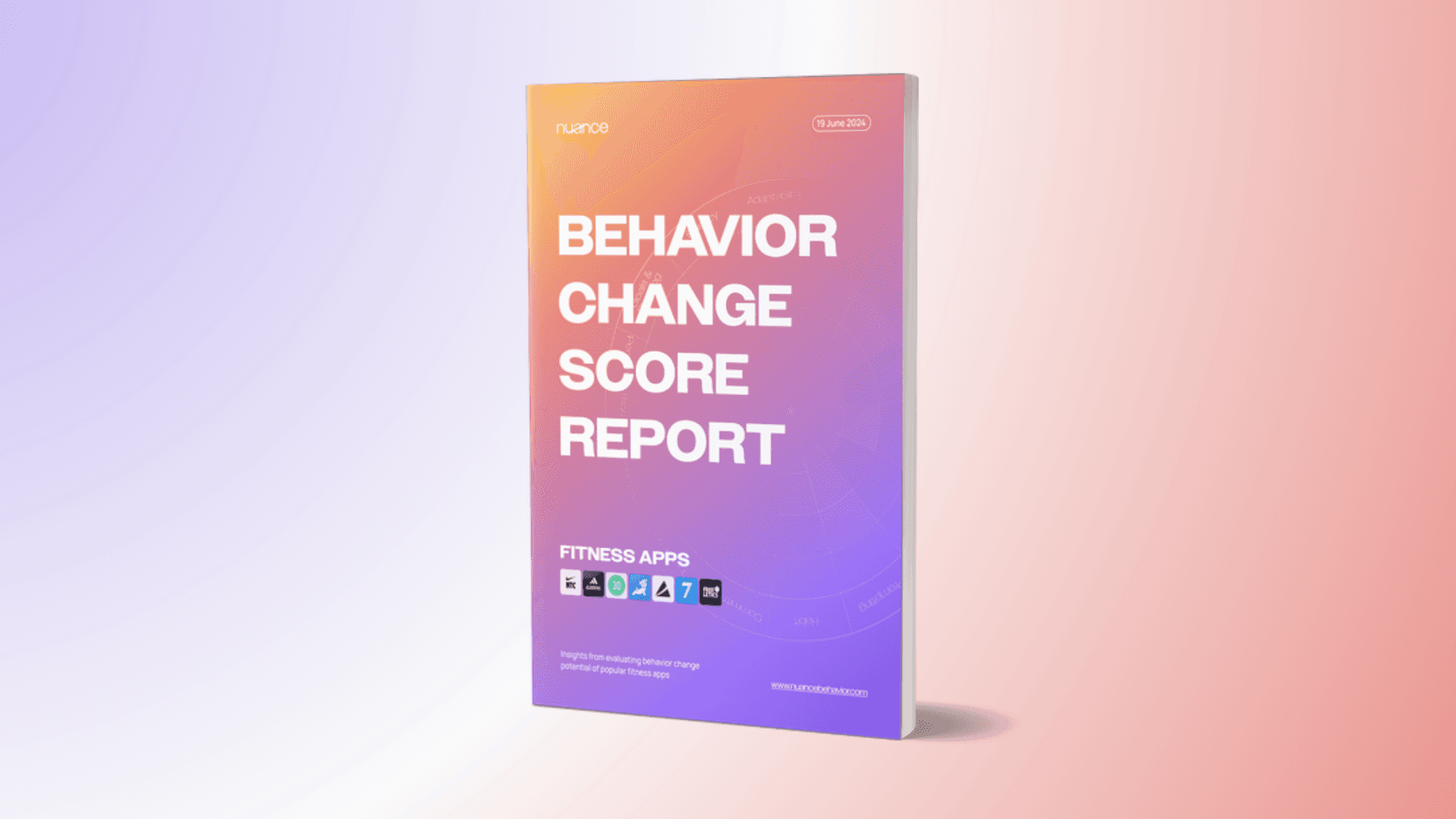Behavioral Design
How to Fix Your Team’s Alignment Problem: The Nuanced Approach
Published on February 3, 2025
In many product teams, strategy often feels as fragmented as the number of voices in the room—product managers, UX designers, marketers, engineers, and stakeholders—each interpreting the same concepts in slightly different ways. This creates confusion, misalignment, and constant course correction as conflicting interpretations push the strategy in different directions.
Take, for example, a team struggling with low conversion rates after offering users a free trial. They might decide to help users develop habits with the app, but without understanding the root cause, each team member could interpret the strategy differently. One group might think the issue is users’ inability to see the app’s value, while others believe the app itself is too complex for habits to stick. These competing theories pull the team in opposite directions. However, when the behavioral aspects are explored—such as how users struggle to integrate the tool into their daily routines—the real issue becomes clear. The problem wasn’t a lack of reward or understanding; it was about helping users integrate the app into their already existing context.
When teams face misalignment, the instinctive response is often to communicate more—use simpler words, create catchy slogans, or circulate polished mission statements in the hope of rallying everyone around a shared vision. But when confusion persists despite endless meetings and documents, it might be time to try a different approach.
True alignment starts with psychology
True team alignment happens when strategy connects back to the psychological realities of users. Obtaining that psychological nuance sparks an ‘aha’ moment, helping teams understand the true objective of their work. In the Discovery phase of our work, we aim to create such moments. By understanding the psychological and contextual landscape through tools like Behavioral Landscapes, Discovery Workshops, and Behavioral Matrices, we uncover hidden drivers and barriers. This reframes problems as behavioral challenges, and helps transform abstract goals into clear, actionable strategies.
True team alignment happens when strategy connects back to the psychological realities of users.
When strategy is rooted in clear behavioral challenges, the abstract can become the intuitive next step that teams can align around. This is what the Discovery phase delivers: it uncovers the behavioral realities of your audience to create a strong strategic foundation. Here’s how:
Case Study 1: Reframing Choice Overload with a Behavioral Landscape
One of our key tools is the Behavioral Landscape—an analysis that maps the psychological realities of a problem space. For instance, we worked with a large e-commerce platform grappling with choice overload, which they initially saw as a product issue. The team’s first solution was to reduce options or simplify information, but each approach had significant trade-offs, leading to resistance.
One of our key tools is the Behavioral Landscape—an analysis that maps the psychological realities of a problem space.
Through a Behavioral Landscape analysis, we examined decision-making and choice overload in other domains like aerospace and gaming. This revealed that the problem wasn’t just the number of options but the decision-making mode encouraged by the interface: users felt pressured to quickly find the “best” deal using an economical heuristic that was difficult to apply with so many variables.
By reframing choice overload as a psychological issue, we shifted the strategy. Instead of reducing options, we redesigned the experience to encourage a more exploratory, playful shopping mode. This approach reduced user pressure, made browsing enjoyable, and improved adoption rates without sacrificing product variety. This promoted a different form of engagement and decision-making which could leave users feeling energized instead of overwhelmed by the product.
Case Study 2: Uncovering Team Insights with a Discovery Workshop
Teams often struggle with alignment because of unspoken assumptions and tacit knowledge. In our Discovery Workshops, we train teams on Behavioral Science fundamentals and use systematic methods to surface hidden insights.
In our Discovery Workshops, we train teams on Behavioral Science fundamentals and use systematic methods to surface hidden insights.
One effective technique is the pre-mortem, a methodology developed by Gary Klein. It asks teams to imagine the strategy has failed spectacularly and brainstorm reasons for the failure. This retrospective approach reveals concerns and assumptions that might otherwise remain hidden.
For example, in one workshop, team members hesitated to voice critiques in traditional settings due to uncertainty and internal politics. No one wants to seem like they aren’t a team player, or that they are ill informed. The pre-mortem flipped this dynamic. Rather than holding onto their hesitations and concerns, it encouraged open discussion of potential pitfalls. This allowed the team to address the concerns before they ever had the chance to manifest, and to then prepare on how to avoid them. Not only did it get team members to voice the concerns they had been holding onto, it even got them ideating about how to address a threat that no one had even considered until that moment.
Case Study 3: Designing for Engagement with a Behavioral Matrix
A digital health startup with over 30 million users faced a major retention issue despite stellar usability. While the app excelled at onboarding, it struggled to keep users engaged long-term. The root cause? A disconnect between in-app behaviors and real-world actions.
Initially, the team assumed that improving in-app features would solve the problem, focusing on smoother navigation, better reminders, and a more engaging interface. However, engagement metrics revealed that users were enthusiastic at first but dropped off when they had to translate digital plans into real-world behavior. Setting up a meal plan in-app was simple, but following through with cooking meals consistently was a challenge.
To address this, we introduced a Behavioral Matrix—a framework linking user behaviors to key performance indicators (KPIs) and aligning them with strategic goals. This allowed the team to identify friction points between in-app interactions and real-world actions. For example, simplifying meal plans to just five ingredients made cooking easier, increasing real-world engagement. Providing tailored grocery lists and integrating with food delivery services further supported behavior continuity. Additionally, we helped the team reframe their approach to habit formation by focusing on small, achievable wins rather than rigid adherence to meal plans.
To address this, we introduced a Behavioral Matrix—a framework linking user behaviors to key performance indicators (KPIs) and aligning them with strategic goals.
By connecting app usability to real-life actions, the team created a seamless, rewarding user experience that improved retention and aligned their internal efforts. The Behavioral Matrix didn’t just optimize app design—it transformed how the team thought about engagement, emphasizing the importance of bridging the gap between digital experiences and real-world behavior.
Conclusion
In product teams, clarity and alignment often feel elusive. But time and again, we’ve seen that the Discovery phase—focused on understanding user psychology—can bring teams into alignment. Whether through Behavioral Landscapes, Discovery Workshops, or Behavioral Matrices, the key is to clarify behavioral dynamics, transforming strategy into something actionable and intuitive.
Ready to discover how Behavioral Science can align your team? Let’s talk.





